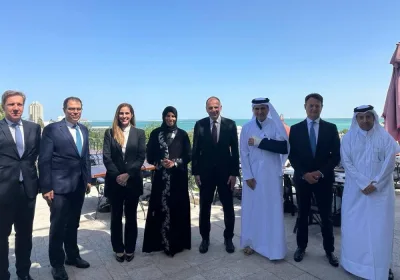By Santhosh V. Perumal/Business Reporter
With Qatar launching Middle East and North Africa's (Mena) first Renminbi (RMB) centre, transaction costs for trade and investments are set to decline and provide another window for domestic banks to expand their product portfolio and enhance revenues.
For Qatar and other economies in the region, the QRC or Qatar Renminbi Centre will lessen the dependence on the US dollar, while for China; it will provide access to China's onshore RMB and foreign exchange markets to local financial institutions fostering cross-border use of the Renminbi, which is the ninth largest most traded currency in the world.
The QRC was launched by HE Prime Minister Sheikh Abdullah bin Nasser bin Khalifa al-Thani in the presence of Qatar Central Bank (QCB) governor Sheikh Abdullah bin Saoud al-Thani, Chinese Ambassador Gao Youzhen and Industrial and Commercial Bank of China (ICBC) chairman Jiang Jianqing. ICBC is the clearing bank for the Chinese currency deals in Qatar.
“The launch of the region’s first RMB clearing centre in Doha creates the necessary platform to realise the full potential of Qatar’s and the region’s trade relationship with China,” QCB governor said.
QRC will facilitate greater cross-border RMB investment and financing by businesses, and promote greater trade and economic links between China and the region, paving the way for better financial co-operation and enhancing the preeminence of Qatar as the financial hub in Mena, he said.
Highlighting that Qatar has “illustrious” relationships with China; he said it witnessed a rising growth since Doha started exporting liquefied natural gas to China, resulting in the high increase of the Qatari exports to China.; while the imports of Qatar from China reached around QR12bn in 2014, thus China becoming the second largest exporter to Qatar and its fourth largest trade partner globally.
The QRC will facilitate the trade business between China and the region, and encourage RMB investments, along with providing liquidity and support required for monetary stability, the governor said.
An agreement was signed last year between the QCB and the People’s Bank of China, during the visit of HH the Emir Sheikh Tamim bin Khalifa al-Thani to China; stipulating the establishment of a bilateral line for currency exchange for the amount of RMB35bn for three years.
China had also announced that Qatar will be granted RMB30bn, enabling any firm, which is licensed to manage the investment funds in Qatar, to invest in the Chinese firms listed in the Chinese stock markets.
Stressing on the benefits for trade and investment sector, official sources said by doing away with the need for conversion of the local currency into dollar and then into Chinese currency, transactions costs would come down by at least 6% to 7%.
RMB is now being increasingly sought after as an international denomination and more so in the last two to three years and considering the level of engagement the Asian country has with the region, it is a win-win situation for both, they said.
“Looking to the future, it will improve the ease of transactions between companies in the region and China by allowing them to settle their trade directly in RMB, drawing increased trade through Qatar and boosting bilateral and economic collaborations between Qatar and China,” according to Jianqing.
The official said it is for the domestic banks to expand their universe by developing various products structured around RMB; otherwise the global lenders, which are already established in the country, will enhance their market share.
With the launch of QRC, banks are now able to expand their investment portfolios of financial services and products through the facilitation and issuance of financial instruments as the trading of debt market, interest rate and commodity derivative products denominated in the RMB.
A memorandum of understanding was also signed between the National Treasury of Kenya and the Ministry of Finance of Qatar in support of the Nairobi International Financial Centre.

HE Prime Minister Sheikh Abdullah inaugurates the QRC, the first of its kind in the Mena


